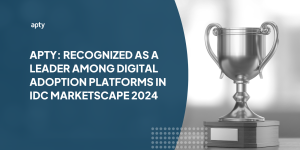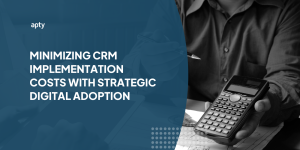Salesforce CRM has established itself as a fundamental tool in customer relationship management. Its emergence is not just a testament to its capabilities in managing customer interactions and sales processes but also an indicator of the evolving needs of businesses in managing their customer relationships. As companies navigate the complexities of customer data, sales pipeline management, and targeted marketing efforts, Salesforce CRM offers a comprehensive solution that promises to streamline these aspects and drive business growth.
The effectiveness of Salesforce CRM is not inherently in the software itself but in how it is implemented and utilized within an organization. The true power of Salesforce lies in its ability to be customized to meet the unique needs of each business, adapting to its specific processes and customer engagement strategies. However, this customization and adaptability also introduce challenges. Businesses often face challenges in user adoption and maximizing the return on their investment in Salesforce. These challenges highlight the necessity for more than just technological deployment; they underscore the need for a strategic approach to embrace and leverage the technology effectively.
This is where Digital Adoption Platforms (DAPs) become crucial. DAPs are designed to facilitate and enhance the user experience with Salesforce CRM, ensuring that the platform is not just deployed but also effectively adopted by the workforce. By providing interactive guidance, personalized support, and actionable insights, DAPs aid organizations in overcoming the common obstacles associated with Salesforce CRM implementation. They ensure that every feature of the CRM is understood and utilized, maximizing the software’s potential and delivering on the promise of improved business performance.
Delving into Salesforce CRM: Overview and Implementation Challenges
Salesforce CRM has emerged as a critical player in customer relationship management. Recognized for its ability to effectively manage customer data, streamline sales processes, and orchestrate targeted marketing campaigns, Salesforce CRM is a crucial asset for businesses pursuing digital transformation. Its robust functionality enhances customer interactions and plays a vital role in driving business growth. The platform’s adaptability across various business needs underscores its indispensability in the modern business toolkit.
Navigating the Challenges of Salesforce CRM Implementation
The journey to implementing Salesforce CRM is not without its obstacles. One of the primary challenges encountered by organizations is ensuring effective user adoption. Transitioning to a new system often creates a learning curve that impacts user engagement and productivity.

Additionally, the customization and integration of Salesforce CRM into existing business processes pose their complexities. These challenges can lead to a scenario where the full capabilities of this powerful platform are not fully leveraged, resulting in a suboptimal return on investment and potential underutilization of the system. Addressing these challenges is critical to unlocking the value of Salesforce CRM in any organization.
Implementing Salesforce CRM, while a strategic move for businesses, brings various challenges that can impact its success and ROI. These challenges can be categorized into several key areas:
- User Adoption and Resistance to Change: One of the most significant hurdles in implementing Salesforce CRM is ensuring all users, from sales teams to customer service representatives, fully adopt and utilize the system. Resistance to change is standard, as employees might be accustomed to existing processes or systems. Overcoming this resistance requires effective change management strategies, including training, communication, and support to ensure a smooth transition.
- Complex Customization Requirements: Salesforce CRM offers extensive customization options to cater to the unique needs of different businesses. However, this flexibility can also lead to complexities in customization and integration with existing systems. Without proper expertise, these customizations can become time-consuming and costly, potentially leading to a CRM that does not align perfectly with business processes or fails to meet user expectations.
- Data Migration and Integration Challenges: Migrating data from legacy systems to Salesforce CRM is critical in the implementation process. This task can be daunting, especially for businesses with large volumes of data or those using multiple systems. Ensuring data quality, consistency, and proper integration without loss or corruption is a challenge that requires meticulous planning and execution.
- Training and Continuous Learning: Providing comprehensive training to users is essential for successfully implementing Salesforce CRM. The challenge lies in the initial training and ensuring ongoing education and support as the CRM evolves and new features are released. Keeping users up-to-date with the latest functionalities is crucial for maintaining efficiency and maximizing the CRM’s potential.
- Alignment with Business Goals: Aligning Salesforce CRM’s functionalities with a business’s specific goals and objectives is critical. The challenge here is to configure and use the CRM in a way that supports and enhances the business strategies rather than becoming just another tool that requires maintenance and input.
- Ensuring Scalability and Performance: As businesses grow, their CRM needs evolve. A significant challenge in implementing Salesforce CRM is ensuring it is scalable and can adapt to changing business needs without performance issues. Planning for future growth and potential expansions in CRM usage is crucial for long-term success.
- Cost Management: While Salesforce CRM can be a valuable investment, managing the costs associated with its implementation and ongoing use is a challenge. This includes the costs of licenses, customizations, integrations, training, and support. Balancing these costs with the expected ROI is essential for justifying the investment in Salesforce CRM.
Addressing these challenges requires a thoughtful approach involving careful planning, skilled resources, and focusing on long-term value rather than just immediate implementation.
Read More: Salesforce Implementation in Retail Industry
The Concept of Value Realization in Salesforce
In Salesforce CRM, value realization transcends beyond mere software deployment; it involves a deeper layer of how effectively the software is harnessed to drive concrete business results. Value realization is about measuring the return on investment not in mere financial terms but in how the CRM transforms business operations. It is the process of evaluating whether Salesforce CRM is just a functional tool or a transformative asset contributing to the strategic objectives of a business.
Measuring Salesforce’s Value Realization
The journey to realizing value from Salesforce CRM can be quantified through several key performance indicators:
- User Adoption Rates: The level of user engagement and proficiency with Salesforce CRM is a primary indicator of value realization. High user adoption rates correlate with successful CRM implementation and utilization, directly impacting business outcomes.
- Efficiency in Sales Processes: The effectiveness of Salesforce CRM in streamlining sales operations is a crucial metric. This includes shortened sales cycles, improved lead management, and enhanced sales forecasting accuracy. Collectively, these factors signify how well Salesforce CRM contributes to the sales department’s productivity and effectiveness.
- Improvements in Customer Satisfaction: At the heart of Salesforce CRM’s purpose is enhancing customer relationships. Measuring improvements in customer satisfaction, retention rates, and engagement levels provides insight into how Salesforce CRM positively impacts customer interactions and loyalty.
- Operational Efficiency Gains: Beyond sales, the impact of Salesforce CRM on overall operational efficiency is vital. This encompasses reduced administrative burdens, improved data accuracy, and streamlined inter-departmental workflows.
- Innovation and Agility: The ability of Salesforce CRM to adapt and support new business initiatives is a measure of its value. This includes how quickly and effectively the platform can be customized to meet emerging business needs or to capitalize on new market opportunities.
Achieving these metrics necessitates a comprehensive strategy encompassing technological implementation, user training, and ongoing system optimization. It’s about creating an ecosystem where Salesforce CRM is not just a tool but a part of the business’s growth and innovation narrative.
Role of Digital Adoption Platforms in Enhancing Salesforce ROI
Digital Adoption Platforms (DAPs) are crafted to bridge the gap between technology and its users. These platforms catalyze seamless software adoption, offering features that simplify and enhance the user experience. DAPs provide interactive guidance, personalized user support, and valuable data-driven insights. This combination makes them an essential tool for organizations aiming to optimize their use of Salesforce CRM.
By addressing the common challenges of software complexity and user proficiency, DAPs play a pivotal role in ensuring that Salesforce CRM is implemented, fully embraced, and effectively utilized.
DAPs and Salesforce: Enhancing Engagement and Efficiency
Integrating DAPs with Salesforce CRM creates a powerful synergy that drives significant improvements in user engagement and operational efficiency. DAPs enrich the Salesforce experience by providing users with real-time, context-sensitive assistance, making navigating and utilizing the CRM’s extensive features easier. This on-demand guidance helps significantly reduce the learning curve and training time for new users.
Furthermore, DAPs aid in overcoming common implementation challenges by offering tailored support and insights. They enable businesses to track user interaction with Salesforce CRM, offering a clear view of areas where users excel or struggle. This data is invaluable for refining training programs, customizing user interfaces, and making informed decisions about future enhancements.
Ensuring that every feature of Salesforce CRM is accessible and understandable, DAPs play a crucial role in maximizing the software’s ROI. They transform Salesforce CRM from a mere tool into an integral component of a business’s strategy, directly contributing to enhanced productivity, better customer relationships, and overall business growth.
Best Practices for Implementing Salesforce CRM with DAPs
Incorporating Digital Adoption Platforms (DAPs) in Salesforce CRM implementation must be a deliberate and strategic choice. This process starts with a thorough understanding of user needs within the organization. By identifying the specific challenges and requirements of different user groups, businesses can tailor the functionalities of DAPs to address these needs effectively.

The next step is to customize training materials and methods on these insights, ensuring each user finds the learning process relevant and engaging.
Aligning DAP functionalities with overarching business objectives is also critical. This alignment ensures that using Salesforce CRM, augmented by DAPs, directly contributes to achieving strategic goals: increased sales efficiency, improved customer engagement, or enhanced data management.
The strategic integration of DAPs with Salesforce CRM goes beyond technical deployment; it’s about weaving these digital tools into the fabric of business operations and culture for maximum impact.
Read More: Best Practices for Salesforce Implementation
Customized Training and Support
Utilizing DAPs for customized training and support is essential in ensuring that Salesforce CRM is effectively adopted across all levels of an organization. DAPs offer the flexibility to create tailored training programs that cater to users’ varied learning styles and proficiency levels. This personalized approach is key to enhancing user adoption and overall satisfaction with the CRM system.
The support provided by DAPs extends beyond initial training. Continuous learning and support are crucial as Salesforce CRM evolves and new features are introduced. DAPs facilitate this ongoing education, providing users with up-to-date information and guidance, ensuring they remain proficient and confident in using the CRM.
This ongoing engagement boosts user competence and fosters a culture of continuous improvement and adaptability within the organization.
Incorporating DAPs ensures that Salesforce CRM becomes more than just a tool; it becomes an integral part of the organizational ecosystem, driving efficiency and contributing to achieving business objectives. Here are a few Best Practices for Implementing Salesforce CRM with Digital Adoption Platforms (DAPs):
- Understand Your Business Objectives: Before implementing Salesforce CRM, it’s crucial to have a clear understanding of your business goals. What specific outcomes do you expect from Salesforce? This could include improving customer relationships, streamlining sales processes, or enhancing data management. Aligning Salesforce with your business objectives ensures the CRM serves your strategic needs.
- Choose the Right DAP: A Digital Adoption Platform like Apty can significantly ease the Salesforce CRM implementation process. The right DAP facilitates smoother onboarding and training and provides insights into user behavior and software utilization. Select a DAP that integrates well with Salesforce and meets your training and support needs.
- Customize for User Needs: Salesforce CRM offers extensive customization options. Tailor the CRM to fit your organization’s unique workflows and processes. This customization should also be reflected in the DAP content, ensuring that training and support are relevant to the specific use cases of your users.
- Effective Training and Onboarding: Utilize the DAP to deliver contextual, just-in-time training. This approach helps in reducing the learning curve and increases user adoption rates. Apty, for instance, can provide in-app guidance and support, making it easier for users to navigate through Salesforce CRM.
- Monitor and Optimize: Post-implementation, continually monitor how your team uses Salesforce CRM. Use the analytics and feedback tools within your DAP to gather insights on user engagement and areas of difficulty. This data can guide you in optimizing the CRM system and the DAP content for better performance.
- Promote a Culture of Continuous Learning: Encourage users to engage with the DAP regularly for ongoing learning opportunities. As Salesforce updates its features or your business processes evolve, the DAP can be vital for keeping your team updated and skilled.
- Evaluate ROI and Business Impact: Regularly assess the impact of Salesforce CRM on your business objectives. Are you seeing improved customer relationships, increased sales, or better data management? The DAP can provide metrics on training effectiveness and software utilization, which are key indicators of the success of your CRM implementation.
Following these best practices, organizations can maximize the benefits of Salesforce CRM. A Digital Adoption Platform like Apty plays a crucial role in this process, ensuring that the implementation is technically sound and strategically aligned with business goals and user needs. This approach not only enhances productivity but also ensures a better return on investment and a higher level of engagement with Salesforce CRM.
Read More: Salesforce Implementation Guide
The Future of Salesforce CRM and Digital Transformation

Evolving Trends in Digital Transformation and Salesforce CRM
The trajectory of Salesforce CRM is increasingly becoming intertwined with the broader trends in digital transformation. As businesses evolve digitally, the demand for more sophisticated, agile, and user-friendly CRM systems escalates. Salesforce CRM, known for its adaptability and innovation, is poised to meet these evolving demands. Integrating advanced technologies such as artificial intelligence, machine learning, and predictive analytics into Salesforce will elevate its capabilities, offering businesses deeper insights and more proactive customer relationship management strategies.
The significance of Digital Adoption Platforms (DAPs) is set to amplify. DAPs are expected to be crucial in facilitating the effective adoption of these advanced features in Salesforce CRM. As Salesforce continues to evolve, becoming more complex and feature-rich, DAPs will become indispensable in ensuring users can leverage these advancements to their fullest potential, maximizing ROI and enhancing overall business performance.
Anticipating Future Developments in Salesforce CRM Optimization
To remain competitive and fully capitalize on Salesforce CRM, businesses must proactively anticipate and adapt to future developments. This involves staying informed about the latest Salesforce updates and trends in digital transformation. It also means being agile in integrating new digital adoption strategies that align with these advancements.
Embracing a continuous learning and innovation culture is key to staying ahead in Salesforce CRM optimization. Businesses should focus on building a workforce that is adaptable and skilled in using emerging technologies. This forward-thinking approach will enable organizations to harness the full potential of Salesforce CRM, adapting it to meet future business challenges and opportunities.
Moreover, collaboration with Salesforce CRM experts and digital adoption professionals will be crucial. These partnerships will provide businesses with the necessary insights and support to navigate the future landscape of digital transformation effectively, ensuring that their investment in Salesforce CRM continues to yield substantial and relevant business benefits.
Maximizing ROI through Strategic Salesforce CRM Implementation
When approached with a focus on digital adoption and value realization, the implementation of Salesforce CRM becomes a pivotal factor in driving a business’s return on investment. It’s about going beyond the basic deployment of the software; it’s about ensuring that every aspect of Salesforce CRM is aligned with the company’s operational and strategic goals. This alignment is essential in converting the CRM investment into measurable and substantial business outcomes.
Digital Adoption Platforms (DAPs) emerge as vital facilitators. They are not just tools but strategic partners that empower organizations to extract the maximum value from their Salesforce CRM investment. By offering personalized guidance, insights, and support, DAPs ensure that Salesforce CRM is not just a platform in use but a dynamic asset driving business efficiency and customer satisfaction.
DAPs bridge the gap between technological capability and practical usage. They enable organizations to navigate the complexities of Salesforce CRM, simplifying its functionalities and making them accessible to every user. This accessibility is key to fostering a culture of digital proficiency, where every interaction with Salesforce CRM contributes to the broader business objectives.
As businesses continue to evolve and adapt to new market realities, the role of Salesforce CRM, augmented by Digital Adoption Platforms, becomes increasingly significant. It stands as a testament to a company’s commitment to keeping up with digital trends and leveraging them for continual growth and customer engagement. In conclusion, the effective implementation of Salesforce CRM, underscored by a robust digital adoption strategy, is not just an IT initiative—it’s a business imperative for sustainable growth and a competitive edge.












